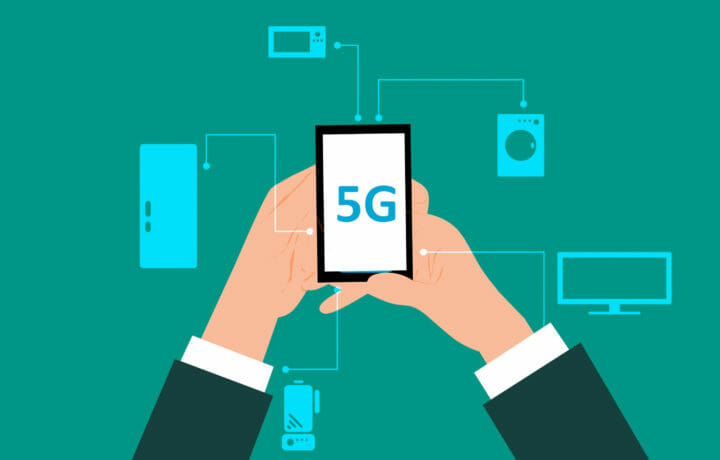The nation’s mobile phone carriers – including AT&T, T-Mobile and Verizon – have been touting the arrival of 5G for a while now, but its benefits are far more than just faster streaming videos to smartphones. 5G is, as the name suggests, the fifth generation wireless technology for digital cellular networks.
5G has the potential to be up to 20 times faster than 4G networks, but in addition to requiring new networks it will require most users to have new equipment as well.
It began wide deployment last year, and 2020 could be the year that the carriers begin to take this to the masses. The key word is “begin” because it could still be years before most consumers see any significant benefits with what 5G has to offer. However, 5G as a technology isn’t something that will just be used on mobile devices.
“5G and the improvements with it will have many benefits for the average consumer from self-driving cars to faster Internet downloads,” explained David Jemmett, CEO of Cerberus Sentinel.
The other advantage to 5G is that those digital networks can’t be as quickly overloaded or overworked.
“The idea that 4G can only support 100,000 devices per square kilometer and with 5G that same space can increase to 1,000,000 devices is an easy description to the problems it will solve and headaches in security it will create,” Jemmett told ClearanceJobs.
In December the Pentagon began a new initiative to determine the long term plans for the integration of 5G networks into Department of Defense operations. The United States has seen China as a rival in the development of 5G and other advanced technology and is making efforts to stay ahead.
Last year a Defense Innovation Board study called “The 5G Ecosystem: Risks & Opportunities for DoD” noted that the faster and more powerful networks could provide the DoD with enhanced decision-making and strategy capabilities. It could also allow faster sharing of information in real-time and improve communication across services, geographies and domains – and even improve situational awareness on the battlefield.
More Than Phoning It In
As 5G is rolled out in 2020 it could solve some of the issues of 4G, such as not being able to address the speed that today’s modern warfighters require. In addition, the Pentagon has called for dynamic spectrum sharing between the military and the private sector. This would enable the military to utilize a spectrum that is not being employed by industry or the private sector.
While this could require advanced artificial intelligence (AI) or machine learning to ensure that commercial and military systems don’t cause interference with one another, it could present opportunities for the military to stay better connected.
“Military experts are focusing on the 5G system to play an essential role for the use of hypersonic weapons/missiles, including those bearing nuclear warheads, which travel at speeds superior to Mach 5 – five times the speed of sound,” said Jemmett. “In order to guide them on trajectories, changing directions in fractions of a second to avoid interceptor missiles, it is necessary to gather, elaborate and transmit enormous quantities of data in a very short time.”
The same high speed communication is necessary to activate defenses in case of an attack with this type of weapon added Jemmett. “Since there is not enough time to make such decisions, the only possibility is to rely on 5G automated systems.”
In addition to the benefits of increased speed by less latency, there is also enormous bandwidth that 5G will provide.
“With this bandwidth, the military will have the ability to create large botnet attacks, DDOS attacks, weaponized drones, and more detailed radar systems for defense,” explained Jemmett. “5G will enhance both our public and military sectors greatly.”
Security Concerns
However, even the most advanced communication networks will have security concerns. This is why the United States government has been very cautious about what firms are playing a role in the deployment of 5G – notably to ensure that foreign state actors can’t use these networks to “listen in” on what the government, military or contractors are saying.
Equipment and other devices from Chinese firms such as Huawei and ZTE are banned from use by the U.S. government and contractors already. This is unlikely to change with the deployment of 5G.
“The fear is that an equipment supplier could be working for a foreign government that wants to spy on ours, or has been compromised by one,” said telecommunications industry analyst Steve Blum, founder of Tellus Venture Associates.
“That fear is legitimate, but it isn’t limited to China or Chinese companies,” Blum told ClearanceJobs.
“U.S. companies can and have been compromised, and even friendly governments spy on each other,” he warned. “The problem is technology-neutral – it’s not particular to 5G. The defense industry faces the same problem when it uses 4G networks or WiFi or even plain old telephone service. Physical security is only one layer of communications security, and it’s the one that’s virtually always outside of the control of the people using it, at least on the civilian side.”
The rollout of 5G won’t address all those concerns either.
“5G presents a problem because the technology is more complex and, in theory, offers more opportunities for bad guys to crack into it and more places for malicious code to hide,” added Blum. “But that problem is present in any advanced technology. There are legitimate security concerns involved with 5G technology, but those problems have to be solved regardless. A multilayered security system is necessary no matter how communications are being carried.”


